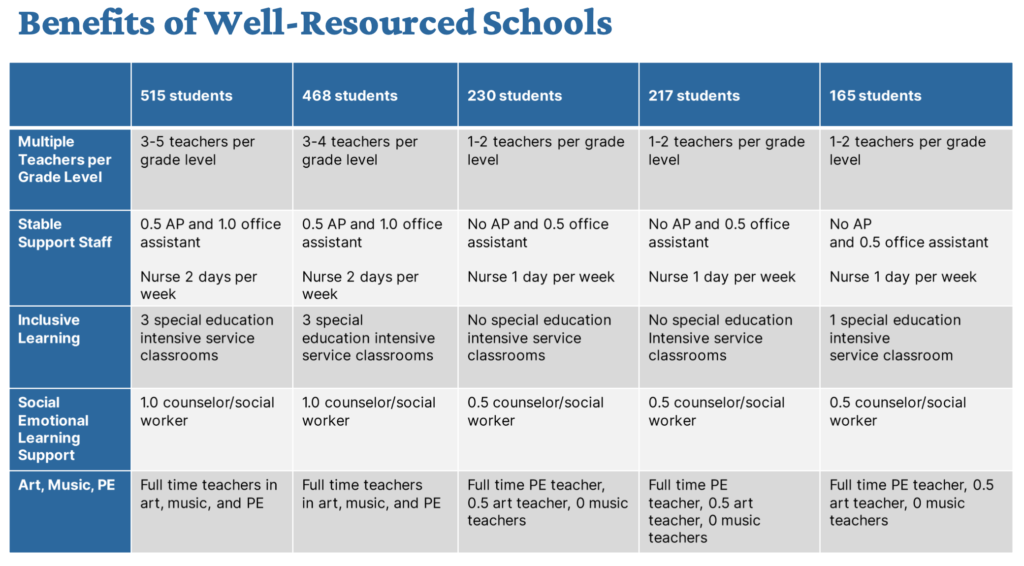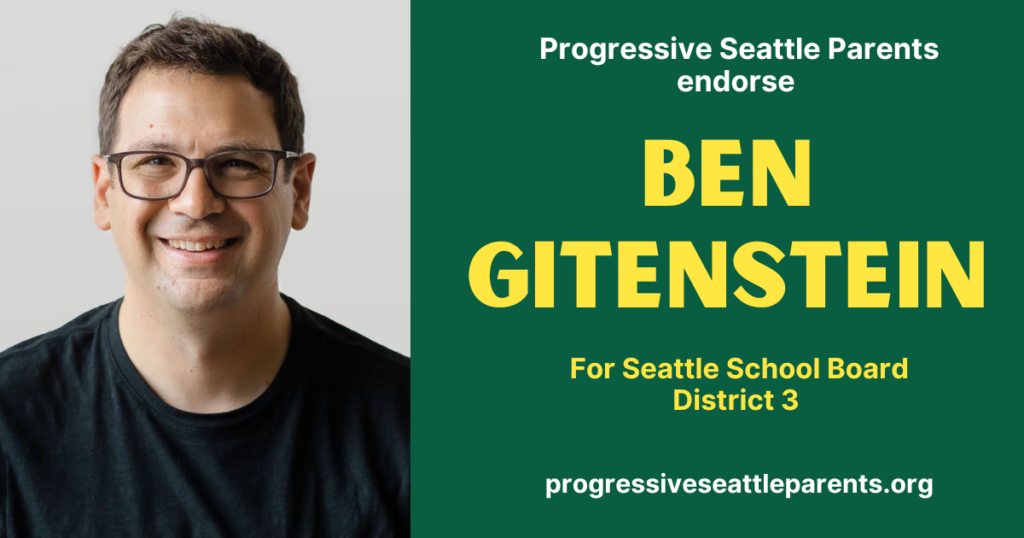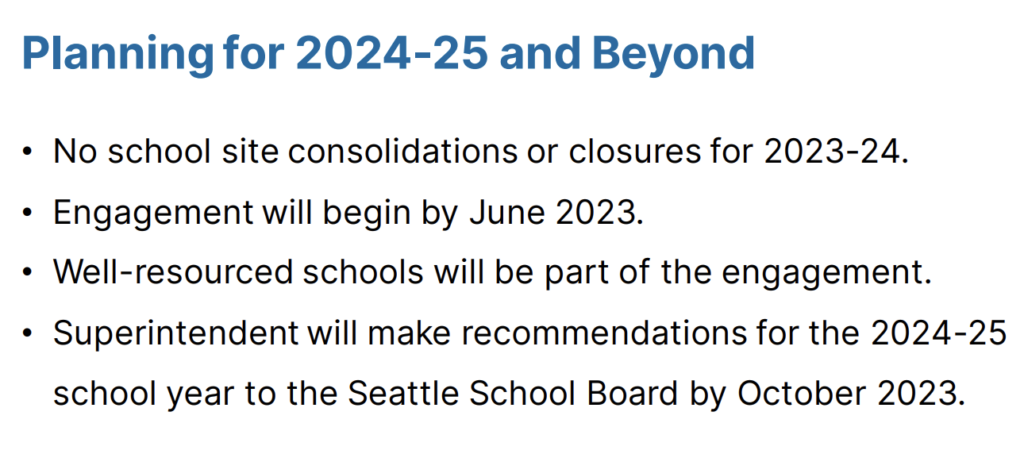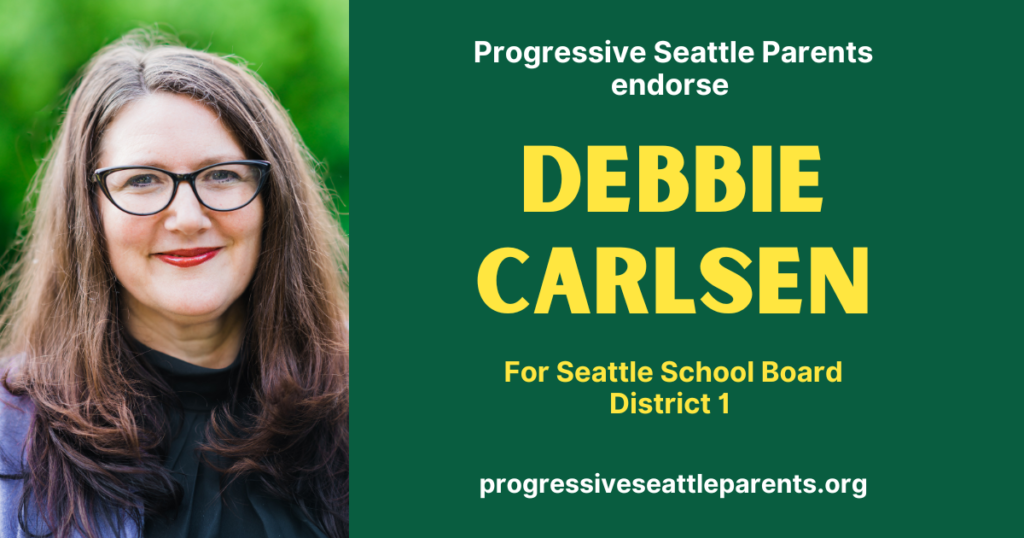On Tuesday night, Seattle Public Schools leaders went on stage before an auditorium full of hundreds of families, educators, and community members at Roosevelt High School to present their plan to close 20 elementary schools. The district did not show the audience any data or financial analysis to explain their claim that mass school closures would create more resources for other schools. Their failure to do so, or to even take questions on the stage, left the public furious.
But SPS does have some numbers now available on their website under an FAQ section, though they chose not to present them on Tuesday night.
Perhaps it’s because the numbers don’t add up.
Seattle Public Schools has a $129 million deficit for the 2025-26 school year. According to the SPS FAQ, closing a public K-5 school would save between $750,000 and $2,000,000. As the district is talking about closing 20 schools, their claims suggest a savings between $15 million and $40 million.
Based on the estimate of a $129 million deficit for 2025-26, this would still leave anywhere between $89 million and $114 million to cut from the budget. Even under the best case scenario, assuming maximal savings and minimal enrollment loss, closing 20 public schools would still leave a whopping $89 million to cut from programs and staff at the remaining schools, ensuring they won’t actually be well-resourced. Instead, they’ll all be worse off than before, with more students in larger classes with fewer resources and a lot less teachers.
That’s under the rosiest scenario. In reality, evidence from across the country shows that a mass closure of schools creates more financial instability, causes a significant increase in families leaving the district, and causes great harm to student outcomes and equity. From the numbers SPS has shown so far, this is what we should also expect to happen here. The district’s mass school closure is a plan for catastrophe.
SPS offers no answer to the remaining budget deficit, instead hoping the state legislature will close most of it. If the legislature doesn’t, huge budget cuts will follow anyway.
The data around school closures suggests that such closures should not be part of the district’s budget plan. The only solution that does not worsen the financial crisis, hurt student learning or equity is to make the state legislature step up with the ample funding our students are promised in the state constitution. We ought to demand the legislature close the whole $129 million deficit, and avoid the damage that a mass school closure and widespread budget cuts would cause.
Uncertain savings from closing a school building
SPS’s headline number of savings from closing a school is not actually spelled out in line item detail, so we have no way to assess their accuracy. Here’s what the district says in their FAQ:
“The estimated savings of between $750,000 and $2,000,000 + per school consolidation reflects budgetary saving in the following areas: administration, transportation, support staff, and building maintenance/operations.”
Without specifics, the public is unable to properly examine these estimates. Which administrators and support staff are being discussed, and how much do they currently make? What are the maintenance and operations that would still have to happen if a school building is no longer being used for a public elementary school, given that there would still be maintenance and operations needs?
The question of student transportation is a particularly significant one, and is left unexplained. Presumably, many students will have a longer commute to and from school when their current school is closed. One would assume that will require more spending on transportation. In the FAQ, SPS notes:
“SPS is not changing the eligibility criteria and ride times in the Transportation Service Standards. Consistent with our current standards, students who live inside the attendance area and outside the walk-zone for their assigned school will be eligible for transportation. Students who receive transportation as part of their IEP will continue to receive that service.”
It is possible that SPS will change the definition of the walk zone and attendance area in order to save money. If so, that would mean more kids would be driven to school, creating safety problems for elementary students and undermining the city’s climate action goals.
Ultimately, the public has no way to judge the veracity of SPS’s school closure savings claims based on what they have presented so far.
Savings from closing schools do not create new resources
The heart of SPS’s pitch is that closing 20 public elementary schools could create more resources at the remaining schools. But, given that there is still a budget deficit of $89 million to $114 million to solve, that is simply not possible. A dollar saved by closing schools simply shrinks the deficit. That dollar cannot also be used in a different school. This is not acknowledged in the district’s FAQ.
Nevertheless, SPS claims:
“Additional students in a building will result in a proportionate increase in teachers to maintain current student:teacher ratios.”
Yet they present no actual evidence to explain how this will happen, especially if there is $90 million or more in other budget cuts coming. If staffing ratios stay the same, then there is no actual guarantee of additional resources for the remaining schools, particularly if additional staffing cuts are required to balance the district’s budget.
SPS relies on the following chart to specify some of the resources the remaining schools would presumably have (though they do not mention the additional deficit that must be closed):
SPS says they want to have K-5 schools with enrollment of about 400. That is notably not shown here, and would fall in between the second and third columns. We can assume perhaps one more teacher per grade level, maybe a nurse at the school 2 days out of the week rather than 1, some special education intensive service classrooms but likely less than 3, and perhaps some more counselor and art/music teacher time.
Again, that all assumes there isn’t a budget deficit of at least $89 million to close, which would make even these small gains impossible to achieve. Nowhere are specific numbers given to explain how these estimates were reached.
From what we’ve seen so far, SPS has not fully shown how they arrived at their estimates for savings from closing public schools, nor have they shown how that translates into these specific new resources, nor have they mentioned there’s still the enormous budget deficit still out there.
SPS hasn’t analyzed the impact on enrollment
So far, SPS has not shown any analysis of how their mass school closure plan would impact student enrollment in the future. They do not appear to have considered the strong possibility that by closing 20 public schools, including redrawing the entire elementary attendance map, they will provoke more families to leave the district. That’s what happened in Chicago and other cities that closed numerous schools, causing those districts to have further budget deficits. If the same thing happens here, SPS will get less money from the state, and we’ll be right back where we are now: facing a budget deficit.
The state legislature gave SPS $100,000 to study the causes of its declining enrollment. The district has no real understanding of why families left, whether the decline was mostly in the early years of the decade during the coronavirus pandemic, whether the decline has stalled, or what they could do to welcome families back to the district.
Proceeding with a mass school closure plan that could jeopardize its enrollment and potentially provoke another budget crisis by pushing out more families would seem like a reckless decision.
Why not just ask Olympia to cover the whole deficit, rather than most of it?
Clearly, the remaining budget deficit of $89 million to $114 million is of central importance to this discussion. SPS has no specific plans to address it aside from asking the state legislature to do it for them:
“If the recommendation to consolidate schools is approved, will the district still need to make additional budget cuts?
Whether SPS will need to make reductions, school consolidations, and a change in bell times will depend largely on the outcome of the 2025-26 Legislative session.
We will be developing different budget scenarios in the fall and winter of the 2024-25 school year, which will prioritize where additional reductions or reinvestments would be made depending on the outcome of the Legislative session.”
This tells us three things: SPS’s mass school closure plan is no guarantee whatsoever that the remaining schools will be well resourced, that they are still relying on the legislature to solve their budget problem for them, and that they surely have a backup plan to impose major budget cuts and teacher layoffs if the legislature fails to act.
Which raises a crucial question: why close schools at all? If the district needs $89 million to $114 million from the state legislature, why not ask for $129 million and avoid closing schools entirely, given the known damage to students, equity, communities, and district finances that mass closures cause?
After all, the state constitution states that “It is the paramount duty of the state to make ample provision for the education of all children residing within its borders, without distinction or preference on account of race, color, caste, or sex.” Nobody can credibly argue the state is making ample provision. In fact, the state’s failure to do so is causing budget deficits in districts all over the state. It’s not just Seattle.
SPS cannot justify its school closure plan by pointing to the budget deficit, which the closures will not solve, nor to a credible plan to deliver more resources to the remaining schools, which the budget deficit prevents.
SPS’s alternatives will happen regardless of school closures
After SPS presented their mass school closure plan at a May 8 board meeting, a strong public pushback began. More than 800 people signed an open letter opposing the plan and instead urged the district to present alternatives backed by rigorous data and analysis.
SPS’s FAQ does mention possible alternatives, but only vaguely and without any details or hard numbers:
“If Seattle Public Schools does not consolidate elementary schools and make a change to bell times, staffing throughout the system will have to be reduced — resulting in layoffs. Specific decisions have not been made. A list of potential other options Seattle Public Schools could explore is below:
Examples of high-dollar reduction options (est. > $5 million each):
Additional class size increases (K-12);
Changes to labor contracts.”
SPS has been steadily increasing class sizes for years, and will do so again for the 2024-25 school year. As to “changes to labor contracts,” this likely refers to the 2022 contract with the Seattle Education Association that gave educators a raise to help them afford the skyrocketing cost of living in Seattle.
SPS goes on to list what it calls “Examples of medium-dollar reduction options (est. $1 – $5 million each),” which include cuts at the Central Office, reducing or eliminating athletics, “consolidate non-traditional schools,” and other reductions in staffing, including school specialists such as art, music, and PE.
They further list “Examples of low-dollar reduction options (est. <$1 million each)” that include additional reductions in senior leadership, a travel freeze, and moving out of the district’s SoDo headquarters.
As with the “high-dollar reduction options,” items in these two categories are presented without any detail or explanation, so that we have no way to assess the tradeoffs between these options and closing schools.
Without more funding from the state, however, most of these options have already happened and will continue to happen in the years ahead. School closures do not take any of these options off the table. SPS surely has done internal planning for what they would cut in the event the legislature once again fails to provide more funding, so they likely have some idea of which of the “reduction options” they intend to use in 2025-26. Again, these options will all ensure that the schools that remain after 20 K-5 schools are closed will have fewer resources than schools have now.
The only way out of this is more state funding
SPS’s financial problems can not be solved by closing schools. Closures will not create well-resourced schools at the remaining buildings. The only way to solve the deficit is to finally make the state legislature come through with the ample funding that they are required to deliver under the state constitution.
Given the damage to student learning, district finances, equity, and communities that closures would cause, it is not only reasonable to ask the legislature to cover the full $129 million and avoid closures – it is essential.
SPS should be told in a strong, unified public voice that they must abandon this reckless school closure plan and instead work with the community to make the legislature amply fund public education, in Seattle and across the state.





